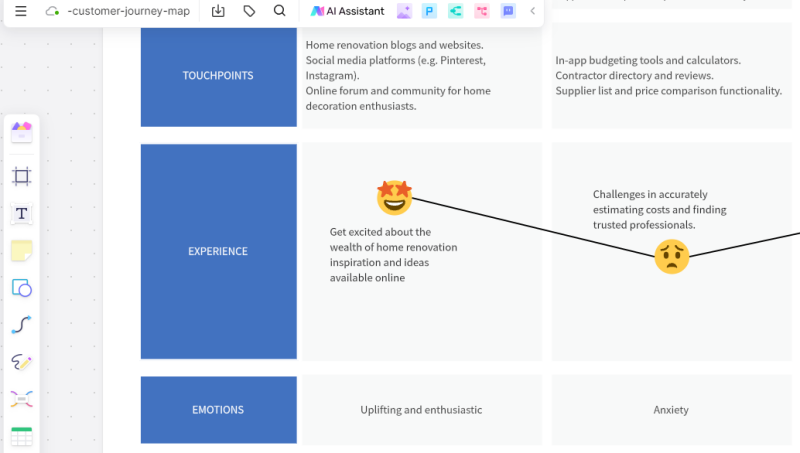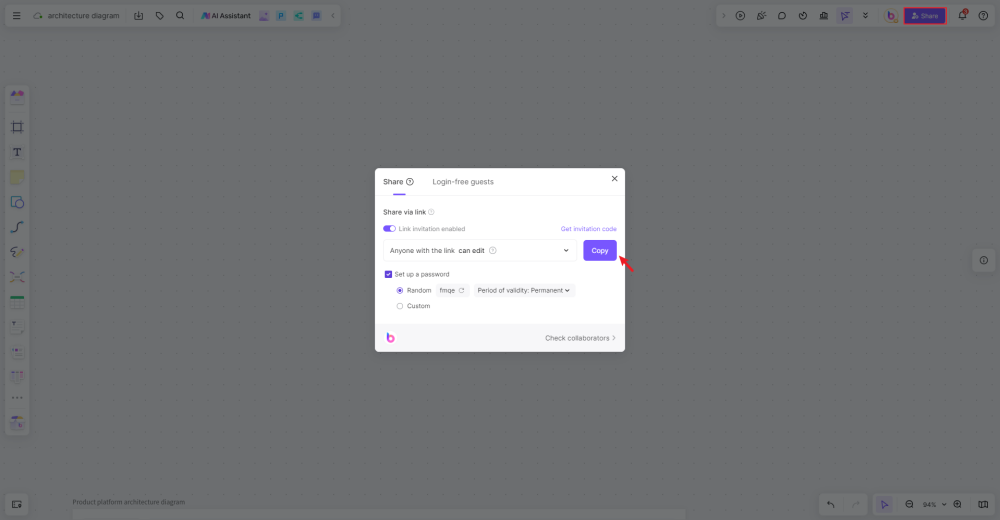The realm of customer experience is vast and ever-changing. To navigate successfully, you need a compass to guide you. A Customer Journey Map can be that guide. This comprehensive map lays out your customers' experiences, from their first contact with your brand to their journey's end as loyal customers.
Creating an effective Customer Journey Map not only allows you to better understand your customers' needs, preferences, and pain points but also offers valuable insights for improving overall customer experience. This article will unravel the what, why, and how of creating a compelling Customer Journey Map that will help elevate your business to new heights.

Create Your Customer Journey Map Here
What is a Customer Journey Map?
In the simplest of terms, a Customer Journey Map is a visual representation that illustrates the steps your customers go through when interacting with your brand. This interaction could be anything from purchasing a product, using a service, or achieving a goal with your brand.
This map often spans multiple channels - offline and online - such as your website, social media platforms, emails, customer service, retail stores, etc. It pinpoints customer interactions (or touchpoints), captures their experiences at each touchpoint, identifies potential obstacles, and highlights opportunities for enhancement.
A well-crafted Customer Journey Map brings your customers' experiences to life by diving deep into their actions, thoughts, emotions, and motivations. It helps to keep the focus on customer-centricity and underscores where improvement in products or services can generate a significant positive impact.

Create Your Customer Journey Map Here
Why Should You Use a Customer Journey Map?
Using a Customer Journey Map provides an abundance of benefits for your business. By illuminating the customer's journey in its entirety, it enables you to see your brand from the customer's perspective, helping to identify gaps between their expectations and their actual experiences.
This user-centric approach aids in understanding the path customers take before making a purchase. It offers valuable insights into their needs and behaviors, revealing touchpoints that might need optimization to ensure smoother customer experience.
Furthermore, mapping out the customer journey promotes cross-departmental collaboration within your organization. Each department gets a clearer picture of its role in the customer's journey, leading to more consistent experiences across different touchpoints.
Lastly, by revealing areas of friction in the customer experience, it presents opportunities to improve and innovate - essential components in staying competitive in today's digital world.

Create Your Customer Journey Map Here
5 Steps to Create an Effective Customer Journey Map
Creating an effective and efficient Customer Journey Map requires a significant understanding of your customers and your business, careful planning, and a healthy amount of collaboration. To help navigate this process, let’s break down each step in detail.
1. Define Personas and Objectives
Before you start mapping the customer journey, you must know who your customers are. Are they tech-savvy millennials or middle-aged homemakers? What are their motivations, needs, behaviors, and pain points? Creating detailed customer personas helps you understand the specific groups of people you’re aiming to serve and allows for the crafting of personalized journey maps that resonate with them.
Simultaneously, it's crucial to outline what you aim to achieve with your map. Do you want to enhance customer experience, boost customer retention, or increase sales conversions? Having clear objectives will guide your mapping process and ensure that your efforts are targeted towards achieving those goals.

2. Map out Touchpoints
Touchpoints are the various points of interaction customers have with your brand across different channels. These can range from browsing your website or store, reading your blogs, interacting with your social media platforms, talking with customer service, or receiving marketing emails.
By identifying all these touchpoints, you capture the entirety of the customer journey and understand how customers interact with your brand at every stage. It’s crucial to be exhaustive in this process - even seemingly insignificant interactions can have a major impact on the customer experience.

3. Identify Moments of Truth
Moments of Truth are crucial points within the customer journey where customers form critical perceptions about your brand. These moments significantly influence their decision to continue their relationship with your brand or seek alternatives.
There are several types of Moments of Truth - the zero moment (when a customer first becomes aware of your brand or product), the first moment (first purchase or interaction), and the ultimate moment (where customer loyalty is won or lost). By highlighting these moments on your map, you can take the necessary actions to ensure that these interactions result in positive experiences.
4. Map out Customer Emotions
A Customer Journey Map is not just about identifying touchpoints and actions, but also about understanding how customers feel at each stage. Are they excited when they discover your products? Do they feel frustrated during the checkout process?
Mapping out these emotions provides a more comprehensive view of the customer journey. It provides opportunities to amplify positive emotions and find solutions for stages where customers experience negative emotions.
5. Design Actions
Finally, once you have charted out the complete Customer Journey Map, it's time to strategize. Use the insights gained from your map to design actions for improving the customer journey.
These actions could range from making it easier for customers to find information on your website, providing better training for your customer service team, personalizing marketing efforts based on individual customer preferences, or even overhauling aspects of your product or service to better meet customer needs. The ultimate goal is to create a more seamless and enjoyable journey that keeps customers coming back.

Create Your Customer Journey Map Now
Tips to Use a Customer Journey Map Template in Boardmix
The task of creating a Customer Journey Map can seem daunting, especially if you are starting from scratch. To simplify this process, using a template in Boardmix can be instrumental. Here are a few tips to maximize its use effectively.
1. Make Use of Customization
Boardmix's templates are not a one-size-fits-all solution. Every brand is unique, and so are its customers. So, the first rule of thumb is to customize the template according to your business needs. Modify the touchpoints, personas, objectives, or any other element in the map that needs tailoring. This ensures your Customer Journey Map accurately reflects your brand and target personas.
2. Embrace Collaborative Mapping
Boardmix allows for real-time collaboration, making it easier to pool ideas and insights from different team members. Leverage this feature to get diverse perspectives. The best maps come from cross-functional teams that can provide a well-rounded view of the customer experience.
3. Regular Updates
As with any business strategy, your Customer Journey Map should evolve with time. As customers' expectations and experiences change, so should your map. Ensure you make regular updates to reflect these changes and to keep abreast of evolving trends. It helps your business stay relevant and attuned to your customers' needs.

Embark on your journey to superior customer experience today! Use this guide and start creating your own effective Customer Journey Map in Boardmix. The path to customer-centric success awaits.








